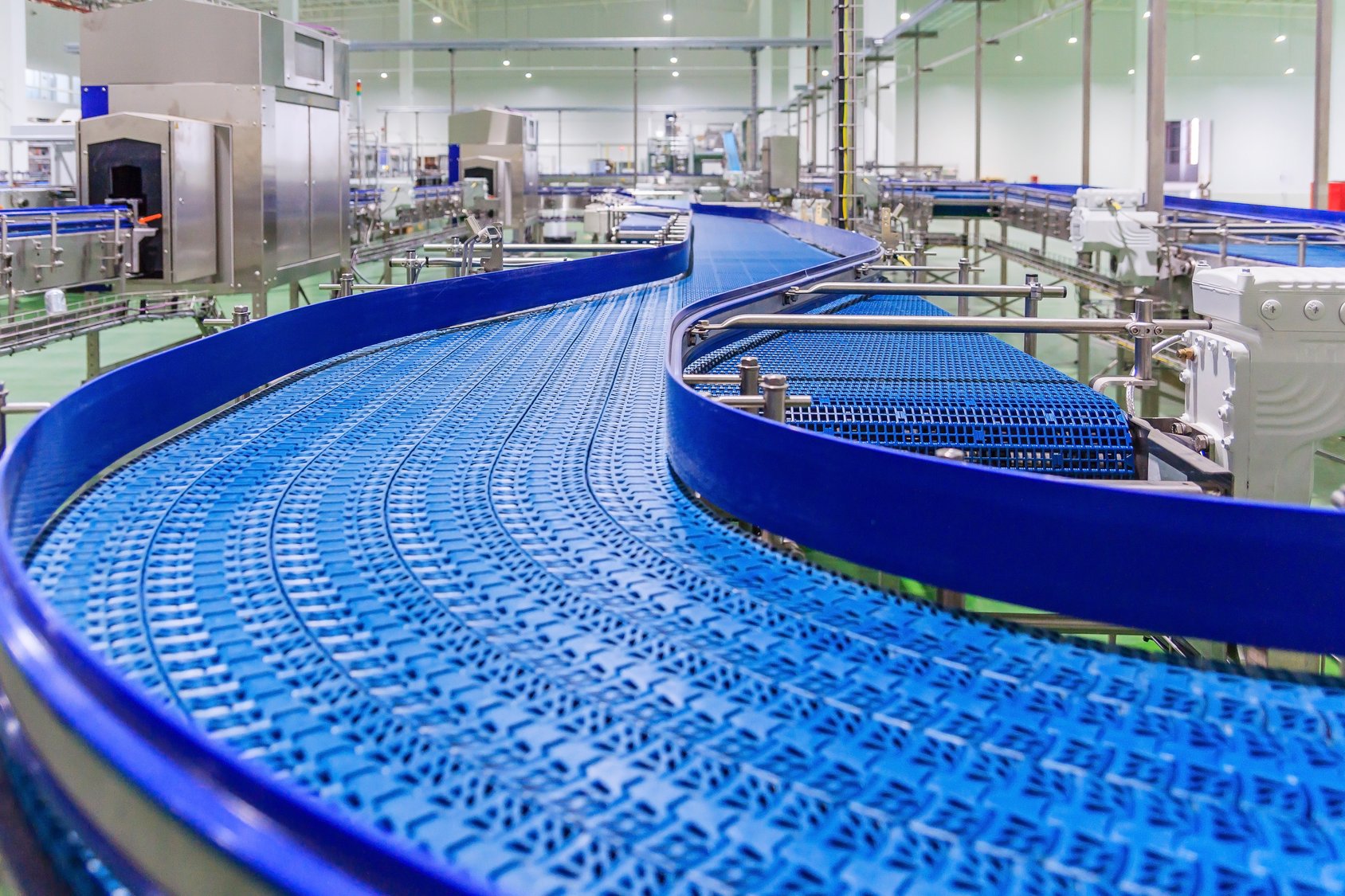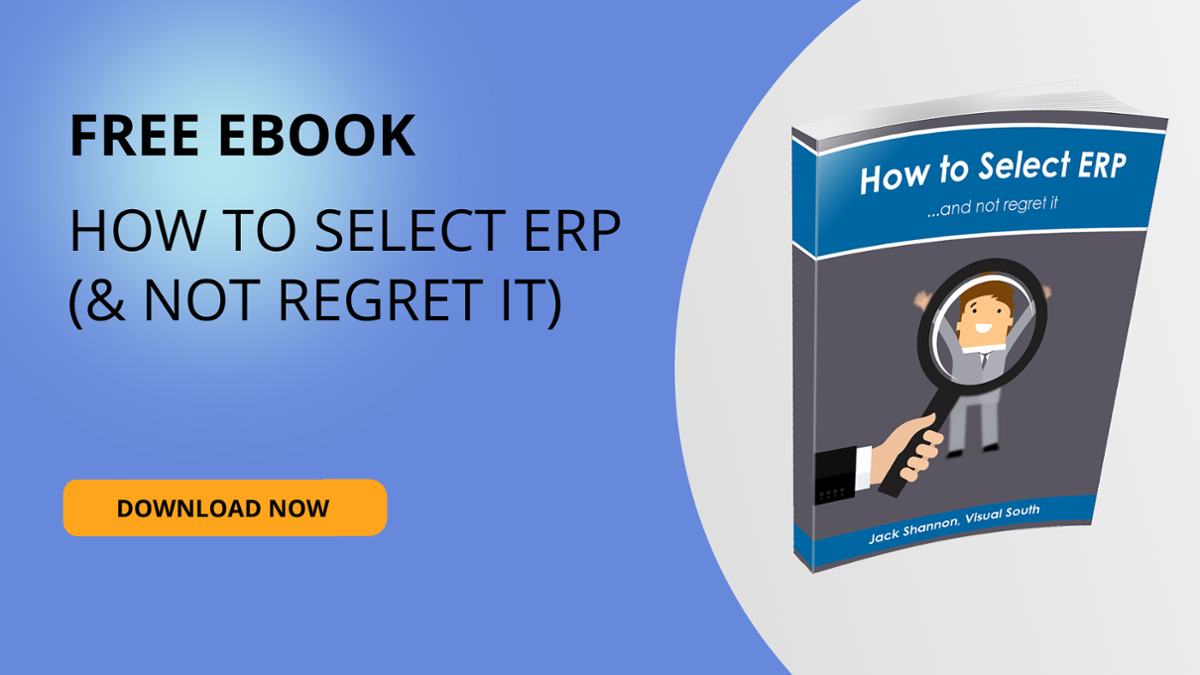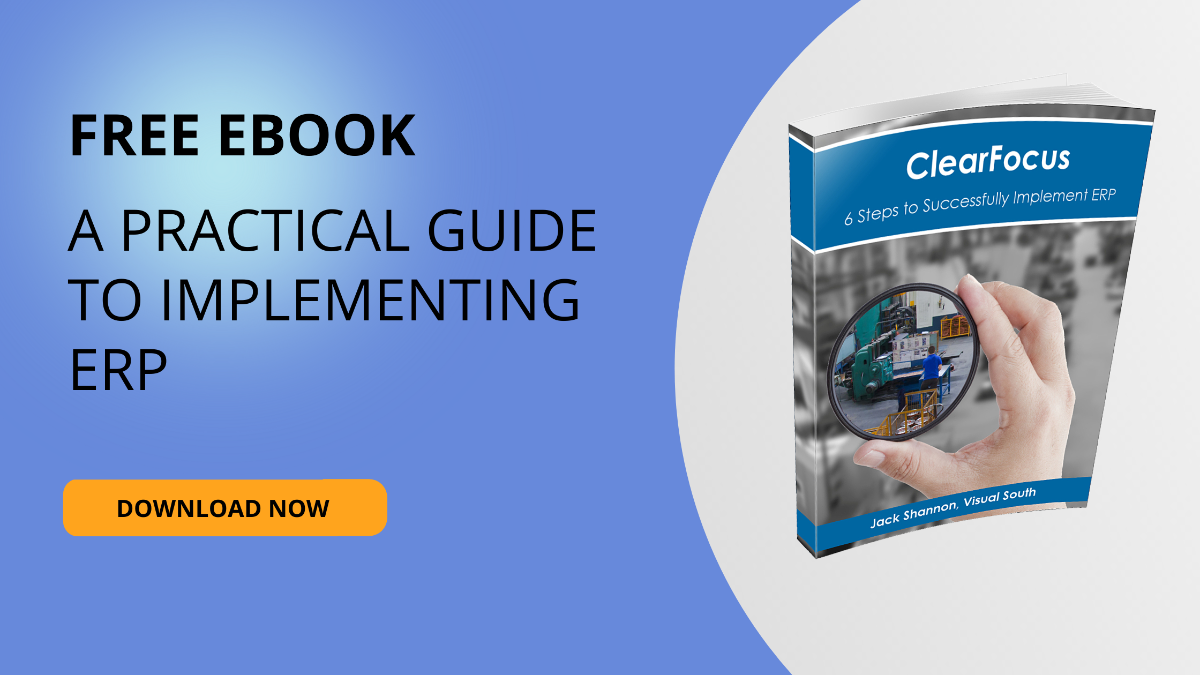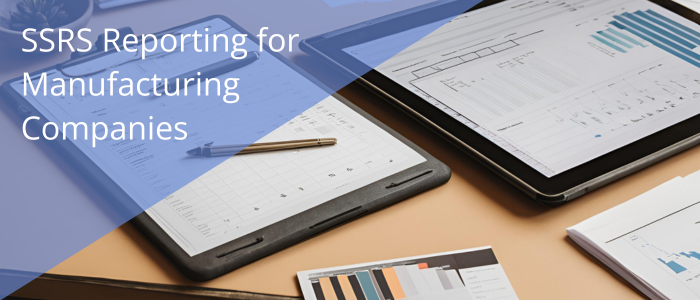
3rd Party Application – Software that has not been developed by the author of the ERP.
Related Visual South blog: ERP Integration Considerations for Manufacturers
ABC Analysis – ABC analysis classifies part IDs by the value and the usage of the item. Parts that cost the most and/or are used most frequently are "A" items. Parts that cost the least and/or are used least are "C" items. All other parts are "B" items.
Accounting Period – A time span that contains all the financial transactions for an entity. Generally, it is 12 months.
Accounts Payable – All unpaid balances that your company owes to its vendors.
Accounts Receivable – All outstanding balances that your customers owe to your company.
Actual Cost– Every labor or material transaction is valued at the cost you pay to your vendor or employee as opposed to valuing the transaction at a standard cost.
Related Visual South blog: Standard Cost vs. Actual Cost in a Work-Order-Driven Manufacturing Company
Advanced Planning and Scheduling (APS) – A method that balances capacity and materials and provides an optimum schedule to manufacturing.
Related Visual South blog: How to Use Infor ERP Correctly in Advanced Planning and Scheduling
Related Visual South blog: How to Fine Tune Your ERP Production Planning
Aging – The number of days between when the invoice was created and today. Can also be calculated between the day it is due and today.
Allocation – Reserving materials for a specific customer order or work order.
API – See Application Programming Interface.
Application Process Review (APR) – An analysis of how the business is (or isn’t) using its ERP.
Related Visual South blog: Analyze Your Use of Your ERP System with an Application Process Review
Related Visual South blog: 5 Steps to Include in Your Application Process Review
Application Programming Interface (API) – Functionality or commands in an ERP that is exposed to developers to assist in the interface between the ERP and another solution.
Related Visual South Service: Custom Application Development
APS – See Advanced Planning and Scheduling.
Assemble-to-Order (ATO) – A business strategy that allows rapid production of customized product by combining a limited number of subassemblies into a large number of possible finished items.
Related Visual South blog: How Infor ERP Helps Assemble-To-Order Manufacturers
ATO – See Assemble-to-Order.
ATP – See Available-to-Promise.
Available-to-Promise (ATP) – The date product will be available to ship based on material and capacity availability.
Related Visual South blog: How to Use Infor ERP Correctly in Advanced Planning and Scheduling
B2B – See Business-to-Business.
B2C – See Business-to-Consumer.
Backflush – The automatic issuing of raw materials from inventory to a work order.
Backorder – There is not enough stock to fill the customer order now, but the order will be filled when stock is received.
Bar Code – A font that converts text and numbers into lines to be read by a scanner.
BI – See Business Intelligence.
Bill of Lading (BOL) – A detailed listing of what is being shipped that is provided to the carrier.
BOL – See Bill of Lading.
Bill of Material (BOM) – The raw materials that are used to build a finished good or subassembly.
Related Visual South blog: Why These Two Manufacturing modules are Most Important to Get Right
BOM – See Bill of Materials.
Bottleneck – A resource in a chain of resources whose limited capacity reduces the capacity of the whole chain.
Related Visual South blog: How to Structure Your Manufacturing Capacity Planning to Work in Any Software
Build to Stock – A strategy put in place when the lead time to the customer is shorter than the lead time to build the item, so the item is built based on an assumption of the demand.
Burden – Costs other than direct labor and material associated with the production of goods.
Business Intelligence (BI) – A set of tools that provides information about Key Performance Indicators (KPIs). The information is typically presented in a graphical or tabular format.
Related Visual South blog: Explaining Infor’s Business Intelligence Tool, Birst
Business-to-Business (B2B) – A business is selling to another business.
Business-to-Consumer (B2C) – A business is selling to individual consumers.
Capacity – The amount of time available at a resource.
Related Visual South blog: How to Structure Your Manufacturing Capacity Planning to Work in Any Software
Related Visual South blog: Managing Capacity Because It’s What You Sell
Related Visual South blog: Build A Sound Process for Manufacturing Capacity Planning
Capacity Requirements Planning (CRP) – Calculating the production capacity needed to meet planned and actual demand.
Cloud – A deployment method that uses a network of remote servers to host the ERP.
Related Visual South blog: The Future of Cloud ERP for Manufacturing Companies
Related Visual South blog: ERP Cloud vs. On-Premise
Related product: Infor CloudSuite Industrial (SyteLine)
Configure Price Quote (CPQ) – Software used to collect attributes of a configured item, apply rules, then create a configuration and quote.
Related Visual South blog: Biggest Benefits of CPQ Software
Related product: Configure Price Quote
Configure-to-Order (CTO) – A manufacturing process where the products have many options.
Consumables – Items that are never in inventory (count or cost). When they are received, they are immediately expensed.
CPQ – See Configure Price Quote.
CRM – See Customer Relationship Management.
CRP – See Capacity Requirements Planning.
CTO – See Configure-To-Order.
Customer – Who the company sells to.
Customer Relationship Management (CRM) – Software that allows a company to capture, track and analyze customer interactions.
Related Visual South blog: ERP vs. CRM
Related Visual South blog: What Goes Into a Customer Relationship Management (CRM) Testing Process?
Related Visual South blog: 3 Downsides of a One-Off ERP & CRM Integration
Related Visual South blog: Strategy for Selecting a CRM Solution
Related Visual South blog: 5 Customer Relationship Management (CRM) Issues Manufacturing Companies Can Avoid
Related product: Infor CRM
Cycle Counting – A procure that audits inventory management. A small subset of inventory is counted on a regular basis. Any discrepancy is thoroughly investigated.
Related Visual South blog: Inventory Management for Manufacturing Companies: Access Your Process
Demand – Items that are needed to fulfill customer orders or work orders.
Related Visual South blog: Why Doing Material Requirements Planning in Excel is Doomed to Fail
Demo – A session designed to highlight software features.
Related Visual South blog: The Right & Wrong Ways to Run Your ERP System Demo Process
Drill Down – Access the detail of the data you are viewing.
Drop Ship (Purchased Items) – Items are purchased by the company, but shipped directly to the customer or another supplier.
Drop Ship (Sold Items) – Items are bought by the customer, but shipped directly to another party.
E-Commerce – Buy and sell transactions that take place on the internet.
EDI – See Electronic Data Interchange.
Electronic Data Interchange (EDI) – The transfer of data from one computer system to another without human intervention.
Related Visual South blog: Modern EDI Solutions for Manufacturers Running Infor VISUAL and CloudSuite Industrial
Electronic Fund Transfer (EFT) – The transfer of money from one bank system to another without human intervention.
Engineer-to-Order (ETO) – A production approach where items are engineered and built to specifications after the order has been received and perhaps a deposit paid.
Enterprise Resource Planning (ERP) – Software that manages and integrates the entire organization such as customer relationships, sales, engineering, production, procurement, inventory and finance.
Related Visual South blog: How To Select the Right ERP System
Related Visual South blog: What is an ERP System?
Related Visual South blog: Infor ERP: Everything You Need to Know
Related Visual South blog: What an ERP System Does Not Include
Related product: Infor CloudSuite Industrial (SyteLine)
Related product: Infor VISUAL
Related Visual South web page: ERP Evaluation Resource Page
Related Visual South eBook: How to Select ERP
ERP – See Enterprise Resource Planning.
ERP Implementation Failures – This avoidable condition occurs when employees at an organization can not perform their job using the new ERP; or when an implementation is halted because the ERP is not a good fit.
Related Visual South blog: Top 3 Reasons Why ERP Projects Fail
Related Visual South blog: 5 Characteristics of ERP Implementation Failures
Related Visual South eBook: How to Select ERP
ETO – See Engineer-to-Order.
Evaluation – The organization’s overall process to find the right ERP solution.
Related Visual South blog: Why Top 10 ERP Lists Are Worthless
Related Visual South eBook: How to Select ERP
Related Visual South blog: How to Run an Exhaustive ERP Comparison
Related Visual South blog: 3 Questions to Ask During an ERP Evaluation
Related Visual South blog: Top 6 Evaluation Criteria for ERP Product Selection
Related Visual South blog: ERP Evaluation: 4 Questions to Ask to Get the Right System
Related Visual South blog: What is the #1 Manufacturing ERP? (Hint, there is no #1)
Estimate – A calculation to determine the cost and selling price of an item.
FIFO – See First In First Out.
Financial Statements – A record of the financial activities and position of an organization.
Finished Goods – An item that is fully produced and is ready to ship.
First In First Out (FIFO) – In the valuation of inventory, the assumption is made that the oldest inventory ships or is consumed first.
Fiscal Year – The year as defined by the company for financial reporting and tax purposes. It may or may not align with a calendar year.
Fixed Assets – Assets that are necessary for production, but that are not going to quickly generate cash. Examples include equipment, vehicles, and buildings.
Fixed Order Quantity – When inventory of an item falls below its reorder point, a predetermined quantity is reordered.
FOB – See Free on Board.
Forecast – Method to drive demand by predicting what future demand will be.
Forecast Error – Difference between the actual value and the forecast value.
Free on Board (FOB) – Defines when the ownership of product being shipped transfers from the seller to the owner.
General Ledger (G/L) – An ongoing record that contains all of an organization’s financial transactions.
G/L – See General Ledger.
Implementation – The process of configuring the ERP software, developing new procedures to take advantage of the new ERP, and training employees on the new processes.
Related Visual South blog: 5 Characteristics of Successful ERP Implementations
Related Visual South blog: 5 Characteristics of ERP Implementation Failures
Related Visual South blog: ERP Implementation Timeline & Project Plan
Related Visual South blog: ERP Implementation Roles & Responsibilities: How to Build Your Team
Related Visual South blog: What is the ERP Implementation Project Manager Responsible For?
Related Visual South blog: ERP Implementation in the Manufacturing Industry
Related Visual South Service: ERP & Service Management Implementation
Related Visual South eBook: ClearFocus: 6 Steps to Successfully Implement ERP
Income Statement – A financial report that summarizes all revenue and expenses to determine the company’s profit or loss for a certain time frame.
Interfaced Software – Two or more applications that pass data in one or two directions.
Integrated Software – A software system that combines many functions into one application.
Inventory – A list of the items that are on hand expressed in quantity and value.
Related Visual South blog: Inventory Management for Manufacturing Companies: Access Your Process
Inventory Adjustment – Method to increase or decrease inventory outside the normal methods of receiving or issuing items.
Invoice – A list of products or services provided with a value owed for said products or services.
Invoice Date – The date the invoice was created.
Item – A single article that is kept in stock.
JIT – See Just-in-Time.
Job – See Work Order.
Job Cost – See Work Order Cost.
Job Shop – A manufacturing facility that produces discrete, specialized, and fairly small manufacturing runs of products that are usually not repeated.
Just-in-Time (JIT) – Providing inventory exactly when it is needed to minimize inventory costs.
Key Performance Indicator (KPI) – A measurable value that reflects how well a company is achieving key business goals.
KPI – See Key Performance Indicators.
Related Visual South blog: A List of Manufacturing KPIs to Consider
Related Visual South blog: 3 Manufacturing Efficiency Metrics & KPIs
Last In First Out (LIFO) – In the valuation of inventory, the assumption is made that the newest inventory ships or is consumed first.
Lead Time – Total time between ordering materials and having them delivered and available for use. Also, total time between the beginning of production of an item and it being completed.
Related Visual South Blog: How to Reduce Manufacturing Lead Time by Optimizing Your ERP
Lean Manufacturing – A manufacturing method that focuses on the reduction of waste within a manufacturing system.
LIFO – See Last In First Out.
Lot Number – A number that is used to identify a specific quantity of material.
Make-to-Order (MTO) – A manufacturing process where the production of an item begins after the customer’s order is received.
Make-to-Stock (MTS) – A production strategy that matches inventory levels with customer demand forecasts.
Master Production Schedule (MPS) – The schedule that a company uses to plan how many items need to be produced within a given timeframe.
Material – Items that are used in the production of goods.
Material Control – Process to assure enough (but not too much) material is available for production and sales.
Material Handling – The physical movement of materials around a warehouse or between operations.
Material Requirements Planning (MRP) – A system designed to react to demand for raw materials and finished goods. It ensures that enough materials are available for production, enough finished products are available to deliver to customers, and that the lowest amount of materials and products needed are on hand.
Related Visual South blog: Why Doing Material Requirements Planning in Excel is Doomed to Fail
Related Visual South blog: ERP vs. MRP: Which System is Right in a Manufacturing Environment?
Material Requirements Planning – A system that enables manufacturers to efficiently schedule, track, and coordinate the components, workforce, and machinery needed to produce goods.
Materials Management – See Material Control.
Mixed Mode Manufacturers – Companies with multiple manufacturing models (MTO, MTS, ETO, or CTO).
Mobile Data Collection – The ability to collect labor or material transactions on a hand held device.
Module – A subset of an ERP system related to a certain function.
MPS – See Master Production Schedule.
MRP – See Material Requirements Planning.
MRP II – See Manufacturing Resource Planning.
MTO – See Make-to-Order.
MTS – See Make-to-Stock.
NAICS – See North American Industry Classification System.
North American Industry Classification System (NAICS) – The standard used by Federal statistical agencies in classifying business establishments for the purpose of collecting, analyzing, and publishing statistical data related to the U.S. business economy.
Outsourcing – Use of other, third party organizations to perform tasks in place of an internal resource.
Overhead – Costs related to running a business not directly related to manufacturing.
Packing Slip – A list of what is included in a shipment for the use of the recipient of goods.
Part Numbers – Unique identifiers that identify every item.
Parts – See Item.
Physical Count – A process to count all items in inventory and then reconciling that against the count in the ERP system.
Procurement – See Purchasing.
Production Control – All activities involved in controlling the production process.
Related Visual South blog: Manufacturing Process Improvements That Make an Impact
Project-Based Manufacturing – Typically produces unique, complex products that requires more than just Engineering and Manufacturing. Other areas of the organization that could be folded into the solution sold to the customer is Design, Permitting, Installation (Erection), Repair, and Maintenance.
Related Visual South blog: Project-Based Manufacturing Software: How to Find the Right Fit
Progress Payment – A payment the customer makes to the company before production is complete. Payments are usually tied to a milestone or date.
Purchase Order – Authorizes a supplier to ship product (or provide a service) by a defined date at a set price.
Purchase Requisition – A request for approval to purchase a material or service.
Purchasing – The process to acquire raw materials, finished goods or services from suppliers.
Quotation – A list of products or services and their related prices.
Related Visual South blog: Biggest Benefits of CPQ Software
Raw Materials – Items used in the manufacturing process of a finished good or subassembly.
Receiving – The process to bring in goods from a supplier.
Reorder Level – The stock level that triggers a purchase order for more supply.
Replenishment – Putting materials into stock to replace items that have been used.
Return Material Authorization (RMA) – The company’s authorization of the return of goods that have previously shipped.
RMA – See Return Material Authorization.
Routing – The sequence of manufacturing steps an item goes though during production.
Safety Stock – A reserve of materials that is not normally needed, but is held to cover unexpected circumstances.
Sales Order – A list of items or services a customer is authorizing you to provide on a defined date and price.
Scheduling – The process of planning and arranging orders to maximize productivity, cost, and delivery times.
Related Visual South blog: You Won’t Fix Your Manufacturing Production Schedule with a Stand-Alone Tool
Related Visual South blog: How to Use Infor ERP Correctly in Advanced Planning and Scheduling
Related Visual South blog: Production Scheduling Software: What You Should (And Shouldn’t) Expect
SCM – See Supply Chain Management.
Selection Criteria – Elements used to determine the best ERP to fit your organization.
Related Visual South blog: ERP for Mid-Sized Businesses: The Selection Criteria
Ship Via – The method to be used to ship product to the customer.
Shipping – The process of creating the documents in ERP to transfer the products to the customers.
Related Visual South blog: How to Measure the On-Time Delivery KPI
Software License – Authorization from the software provider for the use of their intellectual property.
Source Code – The actual intellectual property that is delivered by the software provider. Also known as an application or program.
Spare parts – items held in stock as replacements to keep machinery, equipment, etc. working properly.
Stock – See Inventory.
Supplier – Any outside organization who replenishes or adds to inventory.
Supply Chain – A system of activities and organizations that a product moves through between initial suppliers and final customers.
Supply Chain Management (SCM) – Control of the Supply Chain.
Systems Administrator – The person responsible for the configuration, deployment and upkeep of the ERP system.
Traveler – A document that travels with the items being produced listing the routing steps and materials needed.
UDF – See User Defined Field.
UI – See User Interface.
Unit of Measure – Defines how an item will be counted (each, lbs., inch, foot, etc.).
UOM – See Unit of Measure.
Upgrade – Replacing the current version of the software with a newer, improved version.
Related Visual South Service: Upgrades
User – An individual authorized to log into the ERP system.
User Defined Field (UDF) – Fields in the ERP that can be used to capture data you define.
User Interface (UI) – The way in which a software user is able to interact with a computer system.
Vendor – See Supplier.
Vendor-Managed Inventory – Items whose onsite stock level is controlled by the supplier.
Warehouse – Any location where items are held.
Work in Progress – Items that have entered the production cycle but are not yet finished.
Work Order – An authorization to produce a defined quantity of an item by a certain date.
Related Visual South blog: Work Order Management Process from Creation to Closing
Work Order Cost – The value of material, labor, outsourcing, and burden that went into the production of the work order.
Related Visual South blog: How To Get The Most Out of Your ERP Costing Module
Wow, that was a lot of information!
I hope this post was helpful. If any part feels overwhelming, we're here to help—schedule a call, and let's talk through your questions.









